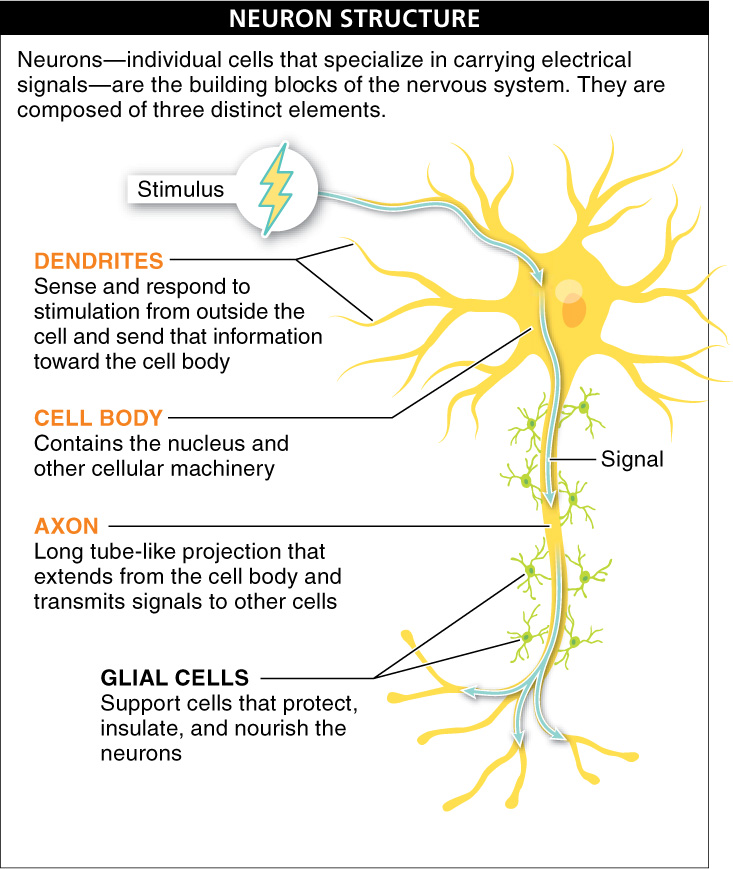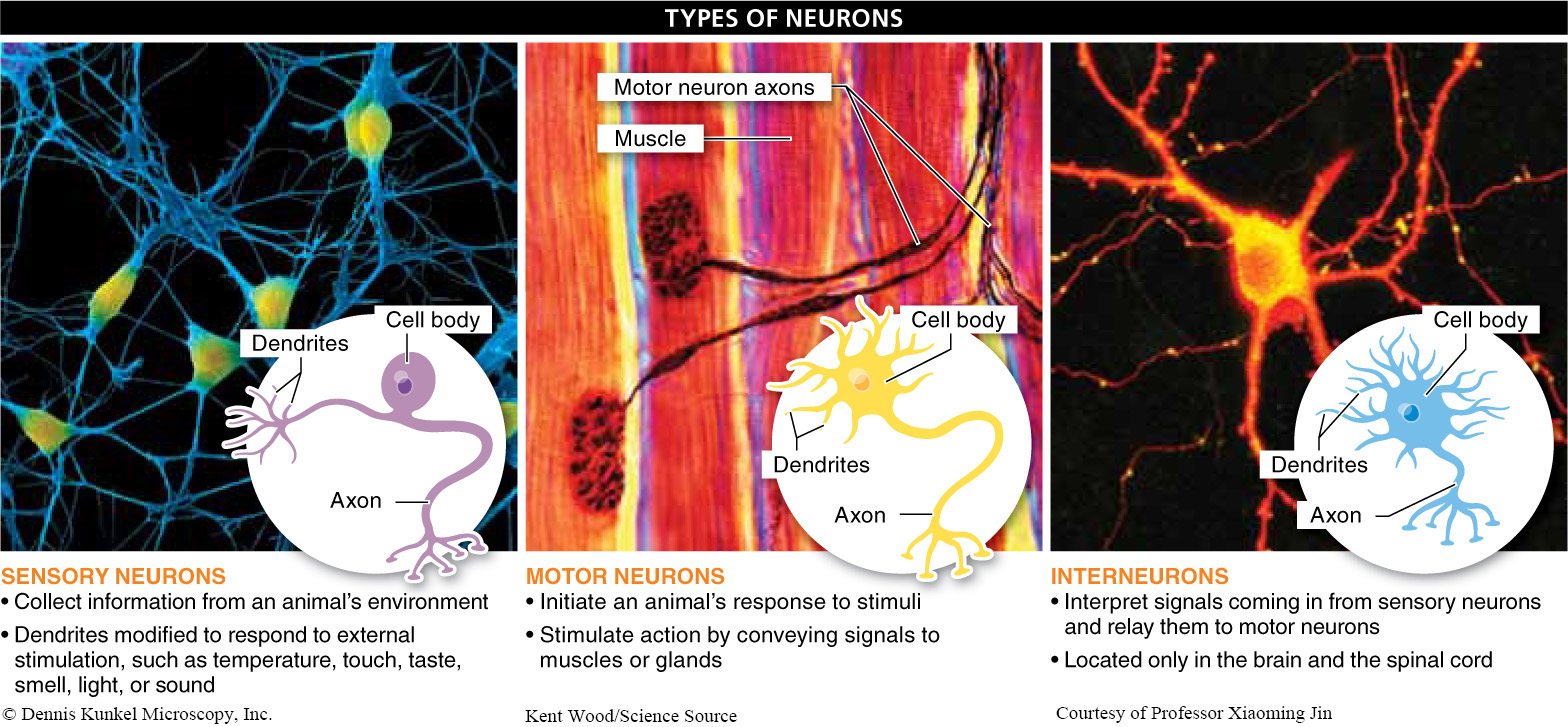The neuron is a type of cell that is specialized for generating and conducting electrical impulses and is found in all animals, with the exception of sponges. It is the building block of all nervous systems (FIGURE 23-3). No matter how complex or simple that system is, it consists of neurons. Each neuron is very small and has but a single option at any point in time: “fire” or “don’t fire” (meaning that the neuron either generates an electrical signal that can convey information to nearby cells, or does not). But, put together a few hundred billion neurons, and things start to get interesting. Taken together, groups of neurons bundled together with connective tissue—

920
Neurons are powerful cells, but they are also fragile. In the time it takes you to read this sentence, one of your neurons will die. If you read it again, another one will die. And neither will be replaced; unlike most cells in your body, very few neurons are able to replace themselves. This need not be cause for alarm, though. Even with about 9,000 neurons dying on a good day—
Even though they perform such varied and significant functions, neurons are relatively standard eukaryotic cells. Each has a cell body that contains a nucleus, mitochondria, endoplasmic reticulum, and so on. But neurons also have two specialized structures that make them unusually adept at interacting with the external environment and with other cells.
The first of these two important specializations is the dendrite. A dendrite is the part of a neuron that is like an antenna: it senses and responds to stimulation from outside the cell and sends that information toward the cell body of the neuron. Numerous dendrites may branch out from the neuron cell body.
The neuron’s second important specialization is the axon. An axon can transmit a signal, much as an electrical wire does, over great distances. Like dendrites, the axon is an extension of the plasma membrane from the main cell body. Sometimes very long, the axon transmits the signals picked up by the dendrites to the rest of the organism’s body. The end of the axon is specially modified in a way that allows it to transmit the signals to another cell. The longest cells in the world are neurons. Some neurons are several feet long. The sciatic (sigh-
If neurons rarely (if ever) divide, how can people get brain tumors, which are the result of unstoppable cell division?
Although neurons do all the actual work of the nervous system, they do it with a lot of help from other cells. Throughout the nervous system, large numbers of non-
Just as corporations keep their big computers locked up in super-
To carry out the activities of the nervous system, there are three functional types of neurons (FIGURE 23-4).

- 1. Sensory neurons collect information from an animal’s environment and have dendrites modified to respond directly to internal and external stimulation. This stimulation can include temperature, touch, taste, smell, light, or sound.
- 2. Motor neurons stimulate action by conveying signals to muscles or glands and initiating a body’s response to stimuli.
- 3. Interneurons integrate the signals coming in from the sensory neurons and relay them to the motor neurons. These “middlemen” are located only in the brain and the spinal cord.
921
In the next section, we’ll look at how these three types of neurons interact and the general organization of the vertebrate nervous system.
TAKE-HOME MESSAGE 23.2
The neuron is a type of cell specialized for carrying electrical signals and is the building block of all nervous systems. Each neuron is very small, but groups of neurons bundled together enable us to sense light, sound, touch, tastes, and smells and to respond to them.
Briefly describe the structure of a neuron.
A neuron has a cell body containing the nucleus and the other organelles typical of eukaryotic cells. Projecting from this cell body are numerous dendrites, which respond to external stimuli. The axon is a tube-like projection that extends from the cell body and transmits signals to other cells.